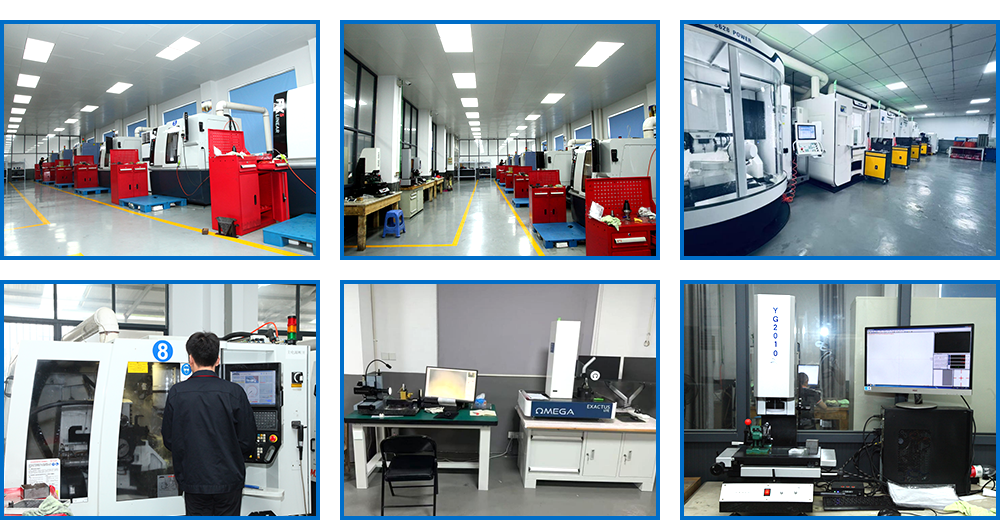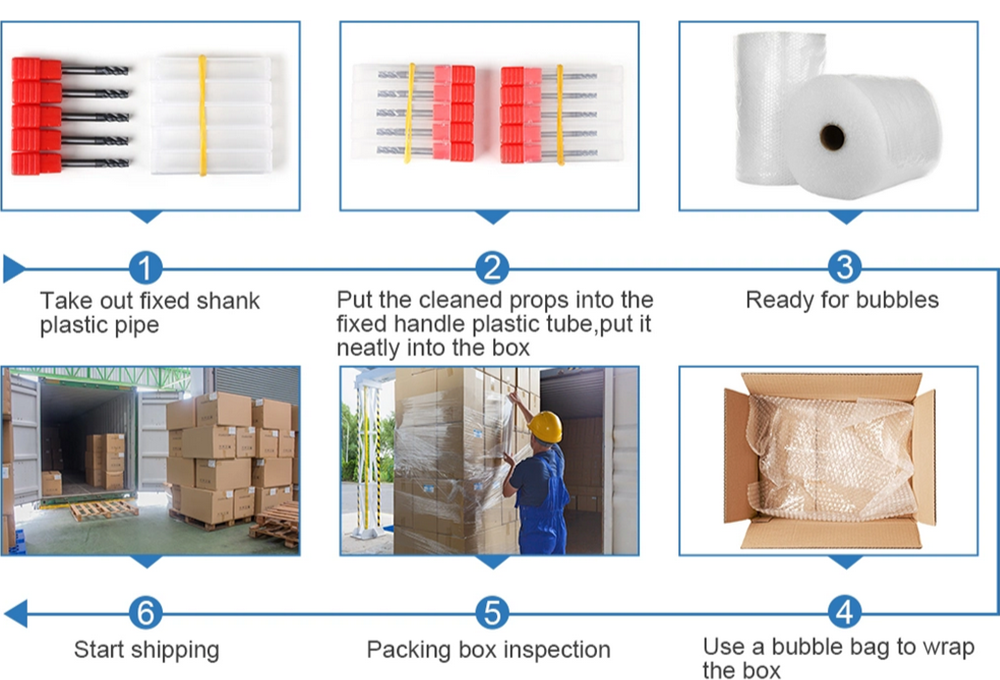English
- All
- Product Name
- Product Keyword
- Product Model
- Product Summary
- Product Description
- Multi Field Search
| SKU: | |
|---|---|
| Availability: | |
| Quantity: | |
Carbide Drills/Coolent Fed Drills
We specialize in the research, development, and manufacturing of high-performance CNC tungsten carbide drills, engineered to deliver unmatched precision, reliability, and durability in modern machining environments. Our drills are meticulously crafted using premium-grade, ultra-fine grain tungsten carbide—a material renowned for its superior hardness, compressive strength, and resistance to thermal deformation.
This advanced material composition enables our tools to maintain cutting edge integrity under extreme conditions, making them ideal for high-speed machining, deep hole drilling, and applications involving tough materials such as hardened steels, stainless steel, titanium alloys, and high-temperature superalloys.
Each carbide drill is precision-ground using state-of-the-art CNC tool grinding technology, ensuring tight tolerances, excellent concentricity, and consistent performance across large production runs. Our proprietary coating options—including TiAlN, AlTiN, and multi-layer nano-coatings—further enhance wear resistance, reduce friction, and improve chip evacuation, significantly extending tool life and boosting productivity.
Materials Suitable for Machining
Hole-making in mold steel, cast iron, stainless steel, and other tough materials.
Show Details

Specitications
| SIZES(D*fL*L) | ||||
| 3D | 5D | |||
| D4.00-D4.95*24*D5*66L | D3.00-D3.60*28*D4*66L | |||
| D5.00-D6.00*28*D6*66L | D3.70-D4.00*36*D4*66L | |||
| D6.05-D6.95*34*D7*79L | D4.10-D4.70*36*D6*74L | |||
| D7.00-D8.00*41*D8*79L | D4.80-D6.00*44*D6*82L | |||
| D8.05-D8.95*47*D9*89L | D6.10-D8.00*53*D8*91L | |||
| D9.00-D10.00*47*D10*89L | D8.10-D10.00*61*D10*103L | |||
| D10.05-D10.95*55*D11*102L | D10.1-D12.0*71*D12*118L | |||
| D11.00-D1200*55*D12*102L | D12.1-D14.0*77*D14*124L | |||
| D12.05-D14.0*60*D14*107L | D14.5-D16.0*83*D16*133L | |||
| D14.5-D16.0*65*D16*115L | D16.5-D18.0*93*D18*143L | |||
| D16.5-D18.0*73*D18*123L | D18.5-D20.0*101*D20*153L | |||
| D18.5-D20.0*79*D20*131L | ||||
Clients Good Feedback

Factory

Service Introduction

Logistics Package

FAQ:
Q: What is the main advantage of using solid carbide drills over high-speed steel (HSS) drills?
A: Solid carbide drills offer significantly higher hardness, wear resistance, and heat resistance compared to HSS. This allows them to run at much higher cutting speeds (often 2-4x faster), dramatically increasing productivity, extending tool life in demanding materials, and enabling the machining of harder alloys like stainless steels, titanium, and superalloys that would rapidly wear out HSS drills.
Q: What are Coolant Fed Drills (Through-Coolant Drills), and why are they important?
A: Coolant Fed Drills (also called Through-Coolant Drills or Internal Coolant Drills) feature internal channels that deliver high-pressure cutting fluid directly to the cutting edges through holes in the drill tip. This is crucial for efficient chip evacuation, reducing heat buildup at the cutting zone, improving tool life, enhancing hole quality (surface finish and dimensional accuracy), and enabling deeper hole drilling without pecking cycles.
Q: What minimum coolant pressure is recommended for effective Coolant Fed Drill performance?
A: Effective performance with Coolant Fed Drills typically requires high-pressure coolant systems. While recommendations vary by drill size and application, a minimum pressure of 70 bar (1000 PSI) is common for smaller diameters (<10mm / 0.4"), with 100 bar (1450 PSI) or higher being ideal, especially for deep holes, smaller diameters, or tough materials. Low pressure severely limits chip evacuation and cooling benefits.
Q: In which applications do Carbide Coolant Fed Drills provide the greatest benefit?
A: These drills excel in demanding applications, including:
Machining hard, abrasive, or tough materials (stainless steel, Inconel, titanium, hardened steels).
High-volume production where maximizing feed rates and reducing cycle times is critical.
Drilling deep holes (depth > 3-5x diameter) where chip evacuation is challenging.
Operations requiring high precision, tight tolerances, and excellent surface finishes.
Automated CNC machining centers equipped with high-pressure coolant systems.
Q: How can I prevent premature chipping or breakage of my solid carbide drills?
A: Key strategies include:
Ensure Rigid Setup: Minimize tool overhang and use high-quality, well-maintained holders (e.g., hydraulic or shrink-fit).
Optimize Feeds & Speeds: Follow manufacturer recommendations; avoid overly conservative feeds which can cause rubbing/work hardening, or excessive feeds/speeds causing shock loading.
Guarantee Adequate Coolant: Use sufficient high-pressure coolant flow/pressure for effective cooling and chip removal.
Accurate Spotting/Piloting: Ensure the start hole is perpendicular and accurately sized/prepared, especially for larger diameters.
Avoid Interrupted Cuts: If possible, design tool paths to avoid holes intersecting edges or cavities during the drilling operation.
Inspect & Replace Promptly: Monitor for wear (especially corner wear/flank wear) and replace drills before catastrophic failure occurs.
Carbide Drills/Coolent Fed Drills
We specialize in the research, development, and manufacturing of high-performance CNC tungsten carbide drills, engineered to deliver unmatched precision, reliability, and durability in modern machining environments. Our drills are meticulously crafted using premium-grade, ultra-fine grain tungsten carbide—a material renowned for its superior hardness, compressive strength, and resistance to thermal deformation.
This advanced material composition enables our tools to maintain cutting edge integrity under extreme conditions, making them ideal for high-speed machining, deep hole drilling, and applications involving tough materials such as hardened steels, stainless steel, titanium alloys, and high-temperature superalloys.
Each carbide drill is precision-ground using state-of-the-art CNC tool grinding technology, ensuring tight tolerances, excellent concentricity, and consistent performance across large production runs. Our proprietary coating options—including TiAlN, AlTiN, and multi-layer nano-coatings—further enhance wear resistance, reduce friction, and improve chip evacuation, significantly extending tool life and boosting productivity.
Materials Suitable for Machining
Hole-making in mold steel, cast iron, stainless steel, and other tough materials.
Show Details

Specitications
| SIZES(D*fL*L) | ||||
| 3D | 5D | |||
| D4.00-D4.95*24*D5*66L | D3.00-D3.60*28*D4*66L | |||
| D5.00-D6.00*28*D6*66L | D3.70-D4.00*36*D4*66L | |||
| D6.05-D6.95*34*D7*79L | D4.10-D4.70*36*D6*74L | |||
| D7.00-D8.00*41*D8*79L | D4.80-D6.00*44*D6*82L | |||
| D8.05-D8.95*47*D9*89L | D6.10-D8.00*53*D8*91L | |||
| D9.00-D10.00*47*D10*89L | D8.10-D10.00*61*D10*103L | |||
| D10.05-D10.95*55*D11*102L | D10.1-D12.0*71*D12*118L | |||
| D11.00-D1200*55*D12*102L | D12.1-D14.0*77*D14*124L | |||
| D12.05-D14.0*60*D14*107L | D14.5-D16.0*83*D16*133L | |||
| D14.5-D16.0*65*D16*115L | D16.5-D18.0*93*D18*143L | |||
| D16.5-D18.0*73*D18*123L | D18.5-D20.0*101*D20*153L | |||
| D18.5-D20.0*79*D20*131L | ||||
Clients Good Feedback

Factory

Service Introduction

Logistics Package

FAQ:
Q: What is the main advantage of using solid carbide drills over high-speed steel (HSS) drills?
A: Solid carbide drills offer significantly higher hardness, wear resistance, and heat resistance compared to HSS. This allows them to run at much higher cutting speeds (often 2-4x faster), dramatically increasing productivity, extending tool life in demanding materials, and enabling the machining of harder alloys like stainless steels, titanium, and superalloys that would rapidly wear out HSS drills.
Q: What are Coolant Fed Drills (Through-Coolant Drills), and why are they important?
A: Coolant Fed Drills (also called Through-Coolant Drills or Internal Coolant Drills) feature internal channels that deliver high-pressure cutting fluid directly to the cutting edges through holes in the drill tip. This is crucial for efficient chip evacuation, reducing heat buildup at the cutting zone, improving tool life, enhancing hole quality (surface finish and dimensional accuracy), and enabling deeper hole drilling without pecking cycles.
Q: What minimum coolant pressure is recommended for effective Coolant Fed Drill performance?
A: Effective performance with Coolant Fed Drills typically requires high-pressure coolant systems. While recommendations vary by drill size and application, a minimum pressure of 70 bar (1000 PSI) is common for smaller diameters (<10mm / 0.4"), with 100 bar (1450 PSI) or higher being ideal, especially for deep holes, smaller diameters, or tough materials. Low pressure severely limits chip evacuation and cooling benefits.
Q: In which applications do Carbide Coolant Fed Drills provide the greatest benefit?
A: These drills excel in demanding applications, including:
Machining hard, abrasive, or tough materials (stainless steel, Inconel, titanium, hardened steels).
High-volume production where maximizing feed rates and reducing cycle times is critical.
Drilling deep holes (depth > 3-5x diameter) where chip evacuation is challenging.
Operations requiring high precision, tight tolerances, and excellent surface finishes.
Automated CNC machining centers equipped with high-pressure coolant systems.
Q: How can I prevent premature chipping or breakage of my solid carbide drills?
A: Key strategies include:
Ensure Rigid Setup: Minimize tool overhang and use high-quality, well-maintained holders (e.g., hydraulic or shrink-fit).
Optimize Feeds & Speeds: Follow manufacturer recommendations; avoid overly conservative feeds which can cause rubbing/work hardening, or excessive feeds/speeds causing shock loading.
Guarantee Adequate Coolant: Use sufficient high-pressure coolant flow/pressure for effective cooling and chip removal.
Accurate Spotting/Piloting: Ensure the start hole is perpendicular and accurately sized/prepared, especially for larger diameters.
Avoid Interrupted Cuts: If possible, design tool paths to avoid holes intersecting edges or cavities during the drilling operation.
Inspect & Replace Promptly: Monitor for wear (especially corner wear/flank wear) and replace drills before catastrophic failure occurs.
content is empty!